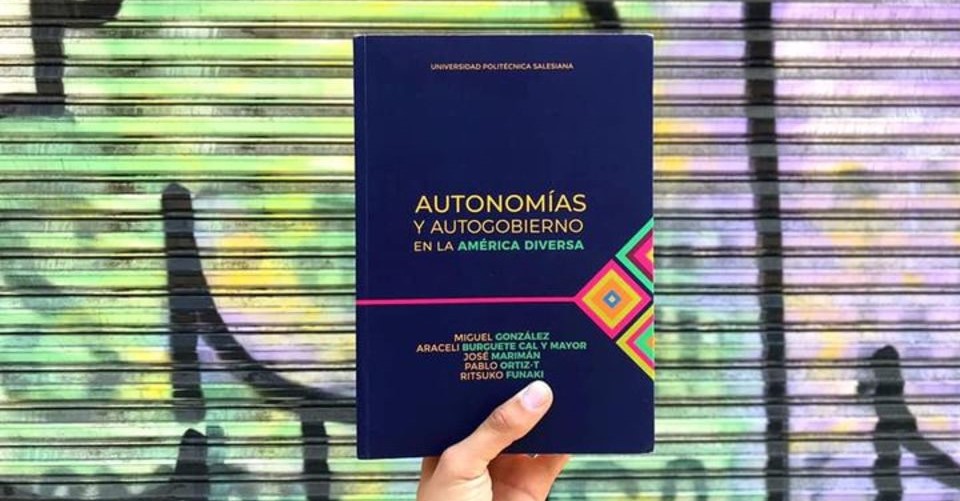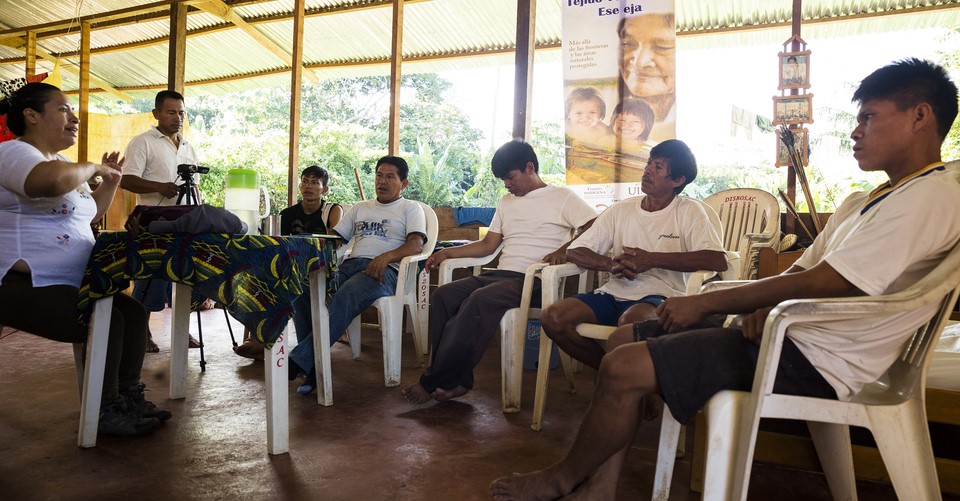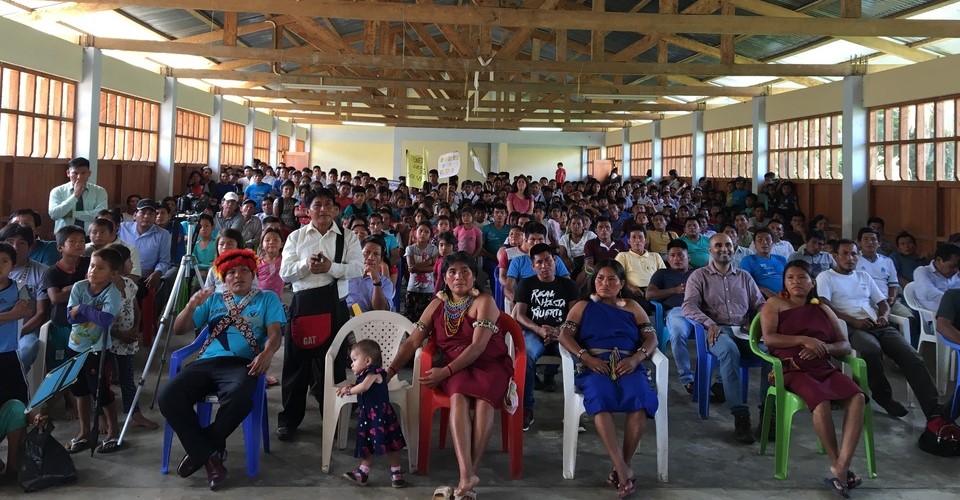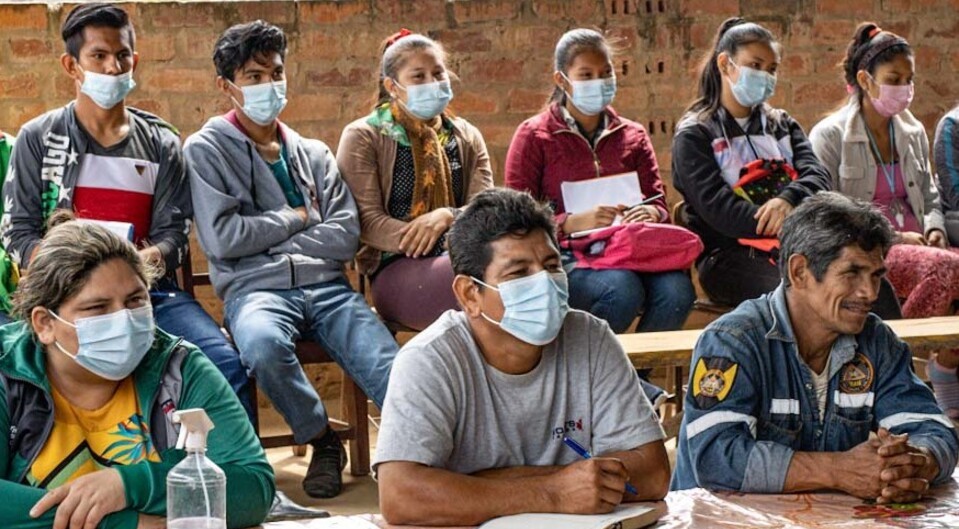The processes of indigenous territorial autonomy as an exercise of self-determination are today a reality in many countries of the American continent. The origins, dynamics and diversity of self-determination processes that developed a little over two decades ago were linked to constitutional reforms inspired by the multicultural paradigm.
Today, the scenario of Indigenous autonomies is much more complex and diverse than a decade ago. In some countries, autonomies have been granted state recognition, constituting political-administrative regimes on different sub-national jurisdictions. In others, there are still important challenges for Indigenous Peoples to exercise the right to self-determination, especially when it comes to the recognition of Indigenous autonomies by the State, recognition that would allow for plurinational democratic co-existence and political empowerment of those who participate in the processes of autonomy building.
It must be acknowledged that a number of states in Americas have transformed their legislation to accommodate territorial autonomy of Indigenous Peoples. However, this accommodation has often been undermined in practice by the dynamics of neoliberal economic globalization, and the centralizing power of the state bureaucratic apparatus and in particular through the dispossession of the ancestral land carried out by extraction economies. Very often the State, either has been in collusion with the groups of economic power in these processes or has been lenient with them, rendering the scope of the rights recognized in national legislations and the framework of international rights almost innocuous.
When it comes to protection of the fundamental rights of Indigenous Peoples, the scenario is as promising as it is declarative. And there are important challenges for this supranational legal body (not in all cases legally binding for the states) to be realized in a practical way (implementation gap), so that Indigenous Peoples can strengthen the exercise to self-determination and autonomy. In states that refuse to politically empower their Indigenous Peoples, Indigenous autonomies are perceived as threats to their jurisdiction, emphasizing the defense of the precept of sovereignty over autonomy, and the prerogatives over administrative and territorial competences that derive from that principle established by international law.
Indigenous Peoples, for their part, propose to transform the state through autonomy, implying that they face important implementation gaps and the absence of an institutional and political environment conducive to their aspirations for self-determination. An example of this is the right to free, prior and informed consultation, whose adoption in the regulatory frameworks of the countries is still uneven. Often it is reduced to a mere formality that allows states and private agents both domestic and global to advance their projects of dispossession of Indigenous Peoples of their natural resources and ancestral territories.
Because of its relevance as processes of social, cultural and above all Indigenous Peoples’ own political construct, Indigenous autonomies today have great significance as a political and epistemic concept for Indigenous Peoples and communities in their relationship with the states. It is of strategic interest for the states to identify the best practices that can strengthen the defense and protection of the fundamental human rights of Indigenous Peoples and other vulnerable populations.
Beyond formal recognition and their inherent ambiguities, these practices can strengthen the exercise of the democratic life of their societies. For Indigenous Peoples, consolidating autonomy is a process that goes beyond fully exercising the rights recognized in territorial spaces. Above all, this process could contribute to Indigenous Peoples’ sociocultural and political survival as distinct peoples.

Autonomies and self-government in a diverse America had the participation of almost 30 indigenous and non-indigenous authors, most of whom were women.
A collective endeavor
In mid-2020, a group of around 30 indigenous and non-indigenous authors, mostly women, embarked on the task to reflect from different perspectives on the state of autonomies in Americas. In 2021 the result of this exercise, the book Autonomies and self-government in diverse America was published by Abya Yala-UPS. Editing of the book was coordinated by the author of this article, together with Araceli Burguete, José Mariman, Pablo Ortiz-T. and Ritsuko Funaki.
Autonomies and Self Government in Diverse Americas reviews the themes and case studies that the publication Autonomy Debated : Indigenous Self government and the Plurinational State in Latin Americ addressed a decade ago. Autonomy debated was a collective work that at the time synthesized the growing interest in autonomy processes of Indigenous Peoples in a decade of political, legal, and social changes in the relationship between the State and Indigenous Peoples in Latin America.
In that book, we anticipated that autonomy, as a discourse and practice, will only expand through the continent, but will do so in multiple ways, at different scales and dynamics, with a variety of collective experiences. These “autonomies” (in plural) already constituted political and cultural processes rooted in the agency of Indigenous Peoples, and had an empowering potential for the struggles for self-determination. Autonomy was beginning to take shape as a constructive agreement within the framework of the States.
In addition, we highlighted the importance of updating in the struggles for autonomy, on the need for organizations and movements to assume the “challenges and equip themselves with new theoretical, political and strategic resources to face the new challenges in times of neoliberal multiculturalism.”
Autonomies and self-government in diverse America covers a wide range of issues and processes that are important to understand the present and future state of autonomies. For example, the phenomenon of non-state (or self-proclaimed) autonomies and the influence of extractivism and violence on the exercise of collective rights and self-determination. The book also analyses the role of Indigenous women in the construction of autonomy, both in individual and associative leadership, as well as in their collective action to identify and overcome gender-based violence that affects young people and girls. The book looks into the relative effectiveness of international instruments and norms in protecting the rights of indigenous peoples, as well as collective action and alliances that lead to autonomy. The latter topics were also covered in Autonomy debated.
For the editors of Autonomies and self-government it was important that the book reflects the diversity of the processes around the struggle for sovereignty of Indigenous Peoples and makes an effort to evaluate the achievements, challenges and threats to the exercise of autonomy and self-government.
Publishing the book in 2021 also has a fundamental historical meaning: it will try to provide a necessary balance of a thirty-year period of indigenous struggles, which erupted with its own voice in 1990, in the celebration of the First Continental Meeting of Indian Peoples that was held in Quito, Ecuador, from July 17 to 21. The “Declaration of Quito” marked the beginning of a historical moment, expressed in Continental Encounters within the framework of the emergence of what would be later called the “500 Years of Indigenous Resistance”. The movement became known as Indigenous emergency, later as Indigenous emergency against neoliberalism or antagonistic movements.
In 1990 the election of the first regional governments in the Autonomous Caribbean Regions of Nicaragua took place, giving rise to the autonomous multiethnic governments in the continent. In Mexico the EZLN rebellion and other expressions of Indigenous struggle at the global level, made the movements relevant protagonists in the 1990-ies contributing to processes of democratization and empowerment. On some occasions, they passed from “resistance to power” at the dawn of the 21st century, along with the rise of “progressive governments” in Latin America led by Evo Morales and Rafael Correa. But there were also involutions that ended in estrangements and ruptures, which favored contentious or emergency strategies of de facto autonomies, as a result of dissatisfaction with the responses and proposals of the state and, by the threats of dispossession and neo-extractive resource development. Thus, an important part of our effort is focused on evaluating these three decades of autonomous indigenous struggles (1990-2020), their relations with the States, and the current moment.

It is important that organizations and movements take on challenges and update their theoretical, political and strategic resources. Palma Real community, Ese Eja people, Peru. Photo: Christian Inga
Commitment, Interculturality and open questions
The book encourages interdisciplinary analysis based on various interpretive traditions in the social sciences, where “indigeneity,” or “autonomy” and “self-governance” are treated as part of intersectional and non-conventional approaches, and through conceptual innovations. This is especially relevant for analyses of the conditions of legal pluralism, social self-regulation and functional practices of power construction that condition different autonomous processes in the region. It also allows us to understand the effect of the coloniality of power as a mechanism of exploitation and social domination and the consequent resistance from the identities, subjectivities and ontologies that feed the life of the autonomies.
The interdisciplinary analysis is also relevant to deal with cross-cutting issues that affect the life of the autonomies: the use and control of natural resources, territoriality, violence and the effects on ecosystems due to global climate change processes. Economic processes are interpreted as forms of social reproduction that include key issues such as redistribution and wellbeing.
Autonomies and self-government addresses how and to what extent the autonomous practices of Indigenous Peoples in the process of building their own knowledges (saberes propios) and powers also have a correlate in other aspects of community social life, such as social reproduction. Or that perhaps one dimension is inseparable from the other, where the policy of state refusal in turn mobilizes “a multidimensional policy of commitment within the autonomous rebel project,” as the Mariana Mora reflects on Zapatista autonomy.
In this book, autonomy comprises a variety of practices, processes and mechanisms of self-governance, through which the inherent rights and sovereign aspirations of Indigenous Peoples around the world to self-determination are expressed and given meaning, and are a part of contemporary sociopolitical life in the Indigenous societies of our America.
Transcendental issues of a first generation of recognition for Indigenous self-determination included social and political participation, the relationship with political parties and the different organs of the State. In this framework, the book offers an updated look at the scope of each of these dimensions of autonomy, and asks how these relationships evolved, which are of great importance for the exercise of self-determination.
The reflections presented in the book are mostly the result of committed research based on many years of collaboration. In particular, the authors identify experiences of autonomy officially recognized by the States, evaluate their scope, and explore their challenges. Similarly, the book provides a look at experiences of autonomy that advance in parallel, in opposition to (or outside) the States and examines their challenges as forms of political, social, and cultural empowerment of Indigenous Peoples.
Some of the questions that the authors address are: what does autonomy mean from Indigenous Peoples’ perspective, and at what social and political spaces it is constructed? Who are the subjects and organizations that promote it? What are the challenges in relationship between Indigenous autonomies and the State, private corporations, international organizations? What is their relevance in the process of development of autonomy? What actors accompany Indigenous peoples, at what stage of the process of the construction of autonomy and with what effect? How is autonomy related to inter-generational changes, gender inclusion and with respect to processes of economic redistribution?

In Peru, the Autonomous Territorial Government of the Wampis Nation emerged as a natural process for the claim of territorial, social, cultural, educational and economic rights. Photo: Alejandro Parellada
Discussion and processes
The first section of the book titled Postmulticultural constrictum and addresses the adversities that the autonomies have faced before the States in a time of setbacks in rights. The second section, Ruptures: recover what was lost and reconstitute, analyzes openings and opportunities, either in the national legal orders or in the practices of the Indigenous Peoples and their organizations to continue advancing in building their autonomies and self-government, despite of obstacles.
The third section, Autonomies as emancipation: the search for their own paths, highlights a plurality of their own practices, cultural, political and institutional processes led by Indigenous Peoples at different scales, social orders, and with a varied level of complexity. These processes offer new emancipatory horizons and creative futures to the struggles for autonomy. In addition, the book has an introduction by the coordination group and a text by Dalee Sambo, an Inuit intellectual and activist, on the right to Indigenous self-determination in international standards.
Thus, a good part of the chapters that make up the book deal with autonomous and self-government experiences in Bolivia, Nicaragua, Peru, Colombia, Mexico, Panama, Ecuador, and Canada. Further the book studies the alliances with non-indigenous society in the struggle for recognition of Indigenous Peoples’ rights in Chile and Argentina, as well as advances in the implementation of rights regarding control over land and natural resources in Bolivia, Colombia, Ecuador, Guatemala, Mexico, Nicaragua, Panama, Paraguay, Peru and Venezuela. In this fashion the book covers various aspects of Indigenous autonomies in thirteen countries of the American continent.
As a whole, the processes studied in the book include aspects related to the implementation of constitutionally recognized collective rights (rights to land and natural resources, prior, free and informed consent, among others), including the right to autonomy and self-government, and political participation.
We also analyze how constitutional recognition led to neutralization of collective action of Indigenous Peoples. We look at how Indigenous Peoples demanded mechanisms and policies for equitable redistribution, of respect and recognition of their sovereign forms of expressing political autonomy as a fundamental condition for successful reversing of historical legacies of racism and colonialism.
Finally, an important part of Autonomies and self-government is dedicated to processes that concern the internal dynamics of Indigenous communities and organizations, including the struggles of women to create stronger and more inclusive autonomous organizations, and spaces free of violence and safe in their communities and in the national societies of which they are a part. The book includes texts where self-government as a fundamental quality of autonomy (with or without legal recognition) has materialized or has not become a reality for Indigenous Peoples.
In this way, the studies narrate the challenges faced by these peoples, especially due to the lack of legal protection and frequently due to the active role of the States in promoting institutional conditions that facilitate the dispossession of lands and resources and threaten the life and cultural survival of Indigenous Peoples. The book contains evidence of good self-governance practices, as well as of the challenges confronting Indigenous Peoples in their struggle to fully enjoy the right to self-determination, autonomy, and self-government.

The Indigenous Multiethnic Territory (TIM) in the South Amazon region of Bolivia is at the final stages of the process that will give a start to a new autonomous Indigenous government. Photo: Andrés Underlestatter
Toward new political horizons
With this book we wanted to contribute to the growing interest in autonomy and the right to self-determination of Indigenous and Afro-descendant peoples in a diverse America. Our objective was to restart the dialogue and to share experiences and lessons learned from the autonomous processes on the continent with organizations that continue the struggle. We hope this will help advance effective exercise of the already recognized rights, the rights that are still in the process of formulation, as well as those that, while not formulated yet, constitute an objective and direction of the struggle towards liberation and emancipation of national societies.
Gustavo Esteva, referring to our work commented: “This book will probably close an era of experiences, analysis and discussions on autonomy and self-government in Latin America. But it will open another. The texts show the tensions and contradictions of these forms of social existence with the nation-state, the political form of capitalism, which for centuries was the main arena for capitalist expansion, but was an obstacle to neoliberal globalization, which has been dismantling it. It is time to conceive and test other political horizons, as is beginning to be outlined here. They are both ways of emancipation and openings to a new world, of radical encouragement. It is not irrelevant that they are mostly drawn by women”.
Our collective effort is to initiate that outline, to test those other horizons, and invite to a dialogue about their possibilities.
